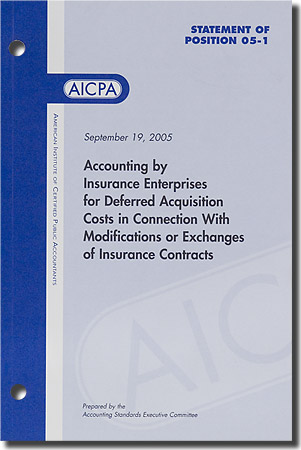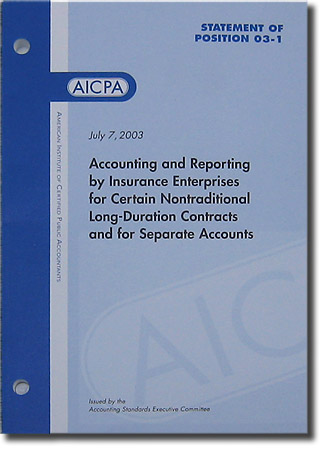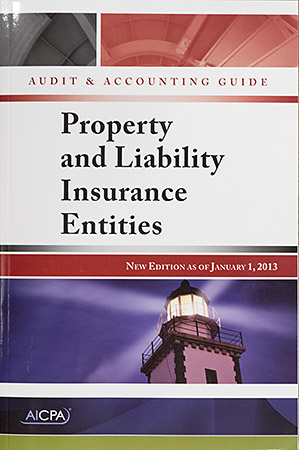Coleman D. Ross
Service to Professional Organizations
A distinguishing mark of a profession is acceptance of its responsibility to the public. The accounting profession’s public … [relies] on the objectivity and integrity of certified public accountants to maintain the orderly functioning of commerce. This reliance imposes a public interest responsibility on certified public accountants. The public interest is defined as the collective well-being of the community and institutions the profession serves….
— The American Institute of CPAs Code of Professional Conduct
I have been involved in volunteer professional service for over 35 years, almost from the time that I became a partner in Price Waterhouse. Having focused on the financial services industry, both as an auditor and as a CFO, and now as an independent director, I have gained unique understanding in insurance, banking, and investing enterprises and their auditing, accounting, and financial reporting issues. I have brought this understanding to technical committees and task forces of professional organizations on which I have been privileged to serve.
Memberships
Professional organizations in which I am currently a member (italicized) or was previously a member include:
 American
AmericanInstitute of CPAs |
 Financial
FinancialExecutives International |
 National Association
National Associationof Corporate Directors |
 North Carolina
North CarolinaAssociation of CPAs |
 American
AmericanAccounting Association |
 Association
Associationfor Financial Professionals |
 Association
Associationof Insurance and Financial Analysts |
 CFA
CFAInstitute |
 The Chartered
The CharteredInsurance Institute |
 Connecticut
ConnecticutSociety of CPAs |
 CPCU
CPCUSociety |
 The Institute
The Instituteof Internal Auditors |
 Institute of
Institute of Directors |
 Institute of
Institute ofManagement Accountants |
 International
InternationalInsurance Society |
 New York
New YorkSociety of Security Analysts |
 Society of
Society ofFinancial Service Professionals |
 Society of Society ofInsurance Financial Management |
 American Institute of CPAs
American Institute of CPAs
I have been a member of the American Institute of Certified Public Accountants since becoming a CPA in 1967. The AICPA is the national professional organization of CPAs in public practice, business and industry, government, and education, which sets ethical standards for the profession and auditing standards for the U.S. private sector.
Between 2002 and 2012, and previously between 1979 and 1988, I served on several AICPA committees and task forces. In recent years, I served on the AICPA’s Financial Reporting Executive Committee (then named the Accounting Standards Executive Committee) and its Property and Liability Insurance Companies Audit and Accounting Guide Task Force. In the earlier years, my service included the Institute’s Insurance Companies Committee, Relations with Actuaries Committee, and Reinsurance Auditing and Accounting Task Force, as well as other task forces. That service is summarized below.
 AICPA Committees
AICPA Committees
Financial Reporting Executive Committee
From September 2002 through September 2005, I was a member of the AICPA’s Financial Reporting Executive Committee (then named the Accounting Standards Executive Committee), which is the institute’s senior technical committee authorized to set accounting standards and to speak for the AICPA on accounting matters. I came to AcSEC, as the committee was commonly known, while I was the chief financial officer of The Phoenix Companies.
AcSEC comprised 15 volunteer members who typically served for three years and were representatives of both national and regional public accounting firms, industry, academia, and analysts. During my tenure the members included partners from the Big Four accounting firms; finance officers from General Electric, Microsoft, Walt Disney Company, Time Warner, Yum Brands, and JetBlue Airways; and accounting professors from City University of New York’s Baruch College, the University of Pennsylvania’s Wharton School, and the University of Alabama. In addition to its members, meetings of the committee are also attended by observers from the U.S. Securities and Exchange Commission and the Financial Accounting Standards Board.
During the period of my AcSEC service, the committee issued six Accounting Statements of Position (three of which had applicability to insurance companies), exposed two more Accounting Statements of Position for future issuance, and began revisions to five Industry Audit and Accounting Guides (including the property and liability insurance companies guide), as follows:
Statements of Position –




- Accounting by Insurance Enterprises for Deferred Acquisition Costs in Connection with Modifications or Exchanges of Insurance Contracts (SOP 05 - 1)
- Accounting for Real Estate Time Sharing Transactions (SOP 04 - 1)
- Financial Highlights of Separate Accounts: An Amendment to the Audit and Accounting Guide for Investment Companies (SOP 03 - 5)
- Reporting Financial Highlights and Schedule of Investments by Nonregistered Investment Partnerships (SOP 03 - 4)
- Accounting for Loans or Certain Debt Securities Acquired in a Transfer (SOP 03 - 3)
- Accounting and Reporting by Insurance Enterprises for Certain Non-Traditional Long-Duration Contracts and for Separate Accounts (SOP 03 - 1)
Proposed Statements of Position –
- Clarification of the Scope of the Audit and Accounting Guide: Audits of Investment Companies and Accounting by Parent Companies and Equity Method Investors for Investments in Investment Companies (Subsequently issued as SOP 07 - 1)
- Disclosures Concerning Credit Losses Related to Loans
Industry Audit and Accounting Guides (under revision) –


- Airlines
- Casinos
- Entities with Oil and Gas Producing Activities
- Health Care Organizations
- Property and Liability Insurance Companies
 The accounting guidance contained in AICPA Statements of Position and Industry Audit and Accounting Guides is cleared by the Financial Accounting Standards Board, or FASB. The procedure for clearing accounting guidance in these AcSEC-issued documents involves the FASB reviewing and discussing in public board meetings (1) a prospectus for a project to develop a document, (2) a proposed exposure draft that has been approved by at least two-thirds of AcSEC’s 15 members, and (3) a proposed final document that has been approved by at least two-thirds of AcSEC’s 15 members. The document is cleared if a majority of the seven FASB members do not object to AcSEC undertaking the project, issuing the proposed exposure draft, or, after considering the input received by AcSEC as a result of the issuance of the exposure draft, issuing the final document.
The accounting guidance contained in AICPA Statements of Position and Industry Audit and Accounting Guides is cleared by the Financial Accounting Standards Board, or FASB. The procedure for clearing accounting guidance in these AcSEC-issued documents involves the FASB reviewing and discussing in public board meetings (1) a prospectus for a project to develop a document, (2) a proposed exposure draft that has been approved by at least two-thirds of AcSEC’s 15 members, and (3) a proposed final document that has been approved by at least two-thirds of AcSEC’s 15 members. The document is cleared if a majority of the seven FASB members do not object to AcSEC undertaking the project, issuing the proposed exposure draft, or, after considering the input received by AcSEC as a result of the issuance of the exposure draft, issuing the final document.
The criteria applied by the FASB in its review of proposed projects and proposed documents include the following:
- The proposal does not conflict with current or proposed accounting requirements, unless it is in a limited circumstance, usually in a specialized industry accounting, and the proposal adequately justifies the departure.
- The proposal will result in an improvement in practice.
- The AICPA demonstrates the need for the proposal.
- The benefits of the proposal are expected to exceed the costs of applying it.
In many situations, before clearance, the FASB will propose suggestions, many of which are included in the documents.
Insurance Companies Committee
Prior to my becoming the leader of our firm’s insurance practice, I served a three-year term, from 1985 to 1988, as the firm’s representative on the AICPA’s Insurance Companies Committee. This committee dealt with accounting and auditing issues for both life and health insurers and property-casualty insurers. Under the direction of the committee, its task forces developed Audit and Accounting Guides, Accounting and Auditing Statements of Position, and Practice Bulletins on insurance industry-specific accounting and auditing topics. These were then presented to either the Accounting Standards Executive Committee or the Auditing Standards Board, the AICPA’s senior technical bodies on accounting and auditing matters, respectively.
During my tenure on the Insurance Companies Committee, we oversaw several task forces, including the Property and Liability Audit Guide Task Force, the Reinsurance Auditing and Accounting Task Force, the Insurance Agents and Brokers Task Force, the Life Insurance Purchase Accounting Task Force, and (jointly with the Health Care Committee) the Health Maintenance Organizations Task Force. We also discussed and provided guidance to the industry on the implementation of FASB statements, including Statement 91, Accounting for Nonrefundable Fees and Costs Associated with Originating or Acquiring Loans and Initial Direct Costs of Leases; Statement 94, Consolidation of All Majority-Owned Subsidiaries; Statement 95, Statement of Cash Flows; Statement 96, Accounting for Income Taxes; and Statement 97, Accounting and Reporting by Insurance Enterprises for Certain Long-Duration Insurance Contracts and for Realized Gains and Losses from the Sale of Investments.
Relations with Actuaries Committee
 I also served on the AICPA’s Relations with Actuaries Committee for a three-year term between 1982 and 1985. This committee worked as a liaison with the Relations with Accountants committee of the American Academy of Actuaries, a professional organization representing casualty, life, health, and pension actuaries. The role of these two committees was to identify issues of interest to both professions and advance those issues on the technical agendas of each profession.
I also served on the AICPA’s Relations with Actuaries Committee for a three-year term between 1982 and 1985. This committee worked as a liaison with the Relations with Accountants committee of the American Academy of Actuaries, a professional organization representing casualty, life, health, and pension actuaries. The role of these two committees was to identify issues of interest to both professions and advance those issues on the technical agendas of each profession.
 AICPA Task Forces
AICPA Task Forces
Property and Liability Insurance Companies
Audit and Accounting Guide Task Force


The AICPA, under the direction of AcSEC and its Auditing Standards Board, is continually updating its industry auditing and accounting guides. When I completed my three-year term on AcSEC in 2005, I then began serving as that committee’s representative on a newly-formed task force, which was revising the AICPA Property and Liability Companies Audit and Accounting Guide to reflect current practice and issues. Members of the task force included representatives from The Hartford, Travelers, Arch Capital, all Big Four accounting firms, and other accountants and actuaries.
The current guide that we completed revising in 2012 was originally issued in 1966 and then revised in 1989. While serving on the AICPA Insurance Companies Committee between 1985 and 1988, I had dealt with the previous task force, which was then revising then guide.
Implementation of FASB Statement No. 91 Task Force and
Accretion of Discounts on Acquired Loans Task Force
 During my tenure on the Insurance Companies Committee, I was appointed to two separate task forces, together with representatives from AICPA industry committees for banking, savings and loan associations, and finance companies, to develop interpretative guidance on implementation of FASB Statement 91, Accounting for Nonrefundable Fees and Costs Associated with Originating or Acquiring Loans and Initial Direct Costs of Leases, which had been issued by the FASB in December 1986. This was during a time when my audit clients included banks, as well as insurers.
During my tenure on the Insurance Companies Committee, I was appointed to two separate task forces, together with representatives from AICPA industry committees for banking, savings and loan associations, and finance companies, to develop interpretative guidance on implementation of FASB Statement 91, Accounting for Nonrefundable Fees and Costs Associated with Originating or Acquiring Loans and Initial Direct Costs of Leases, which had been issued by the FASB in December 1986. This was during a time when my audit clients included banks, as well as insurers.
FASB Statement 91 establishes the accounting for nonrefundable fees and costs associated with lending, committing to lend, or purchasing a group of loans. It provides for the deferral of certain fee income associated with originating or acquiring loans and leases and related costs. The guidance developed by the first task force was as to the types of costs that were appropriate for deferral. The task force conclusions were published by the Financial Accounting Standards Board in the FASB Special Report: A Guide to Implementation of Statement 91 on Accounting for Nonrefundable Fees and Costs Associated with Originating or Acquiring Loans and Initial Direct Costs of Leases: Questions and Answers.
FASB Statement 91 also addresses accounting for differences in prepayments and interest rates that are not attributable to credit quality. The second task force developed accounting guidance for differences attributable to credit quality and addressed the intertwining issues of accretion of yield, measurement of credit losses, and recognition of interest income. The conclusions of this task force were published as AICPA Practice Bulletin 6, Amortization of Discounts on Certain Acquired Loans, issued in August 1989. This practice bulletin was amended by AICPA Accounting Statement of Position 03 – 3, Accounting for Loans or Certain Debt Securities Acquired in a Transfer.
Reinsurance Auditing and Accounting Task Force
 My
introduction to professional service was over a six-year period from
1979 to 1985, when I was an inaugural member of the AICPA’s Reinsurance Auditing
and Accounting Task Force. This task force was formed under the AICPA
Insurance Companies Committee at the request of the U.S. Securities
and Exchange Commission to develop accounting and auditing guidance for nontraditional
reinsurance transactions.
My
introduction to professional service was over a six-year period from
1979 to 1985, when I was an inaugural member of the AICPA’s Reinsurance Auditing
and Accounting Task Force. This task force was formed under the AICPA
Insurance Companies Committee at the request of the U.S. Securities
and Exchange Commission to develop accounting and auditing guidance for nontraditional
reinsurance transactions.
Initially, the task force developed guidance for auditing reinsurance arrangements and issued two AICPA Auditing Statements of Position, Auditing Property-Casualty Reinsurance and Auditing Life Reinsurance; today both of these are incorporated into the AICPA industry guides, AICPA Audit and Accounting Guide: Property and Liability Insurance Companies and AICPA Audit and Accounting Guide: Life and Health Insurance Entities.
One of the accounting Statements of Position, Transfer of Risk in Reinsurance Contracts and Accounting for Reinsurance Contracts, has since evolved into Financial Accounting Standards Board Statement No. 113, Accounting and Reporting for Reinsurance of Short-Duration and Long-Duration Contracts, and another, Statement of Position 92-5, Accounting for Foreign Property and Liability Reinsurance, provides guidance in accounting for Lloyd’s and other multi-year contracts.
 New
York Society of Security Analysts
New
York Society of Security Analysts
I was a member of the New York Society of Security Analysts from 1996 to 2007. NYSSA, the largest of the local financial analyst societies and affiliates of the CFA Institute, promotes awareness and understanding of securities analysis, investing, and the operations of the securities markets.
Improved Corporate Reporting Committee
I was a member of NYSSA’s Improved Corporate Reporting Committee between 2004 and 2007 and previously from 1999 to 2001. This committee closely follows issues and events affecting financial reporting, corporate disclosures, and accounting standards. Its primary mission is to keep the membership of the NYSSA informed about those issues through speaker programs and conferences, including its annual Financial Reporting Conference. The committee also selectively advocates specific positions on proposed new financial reporting standards before regulators and standard setters.